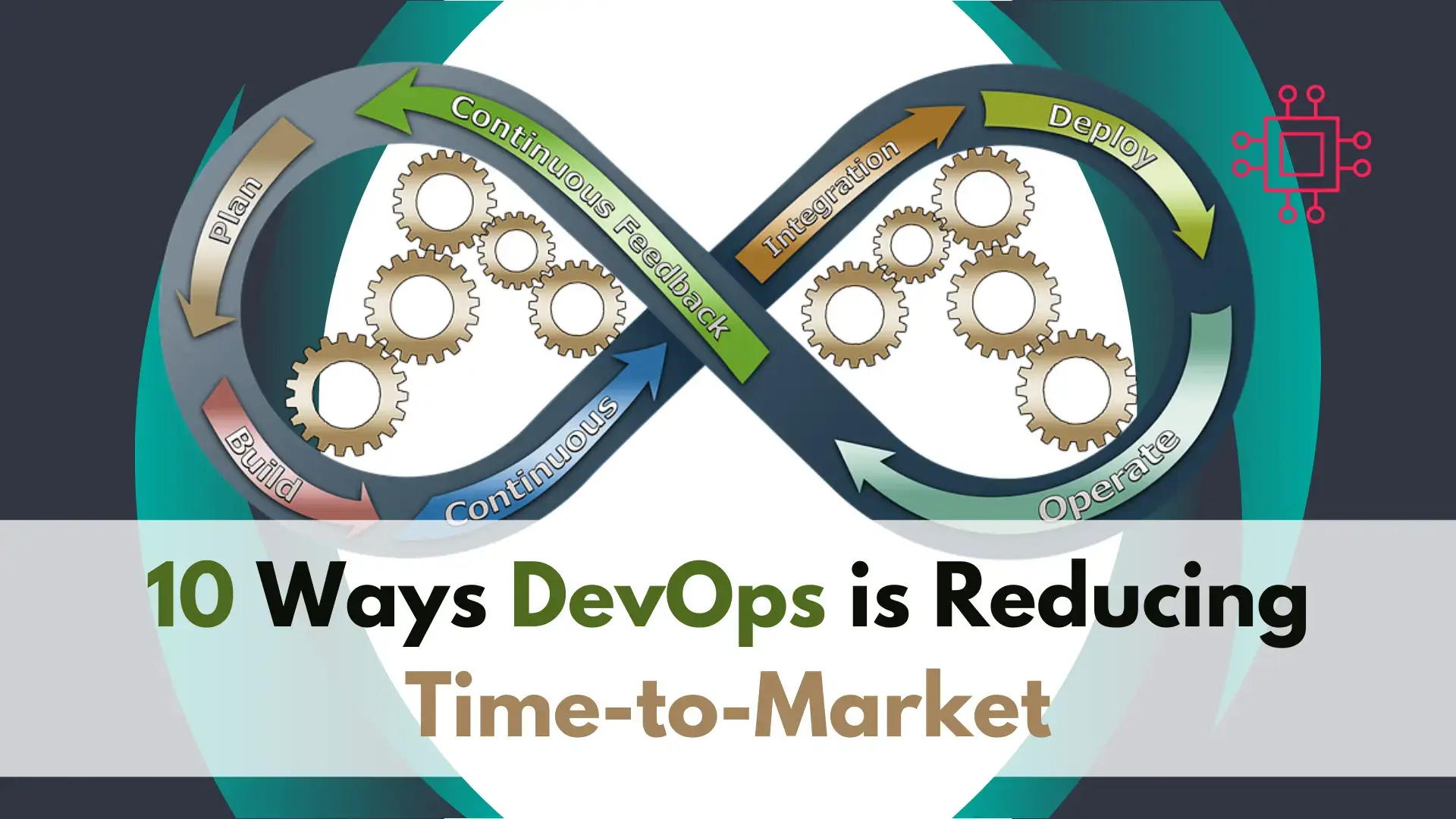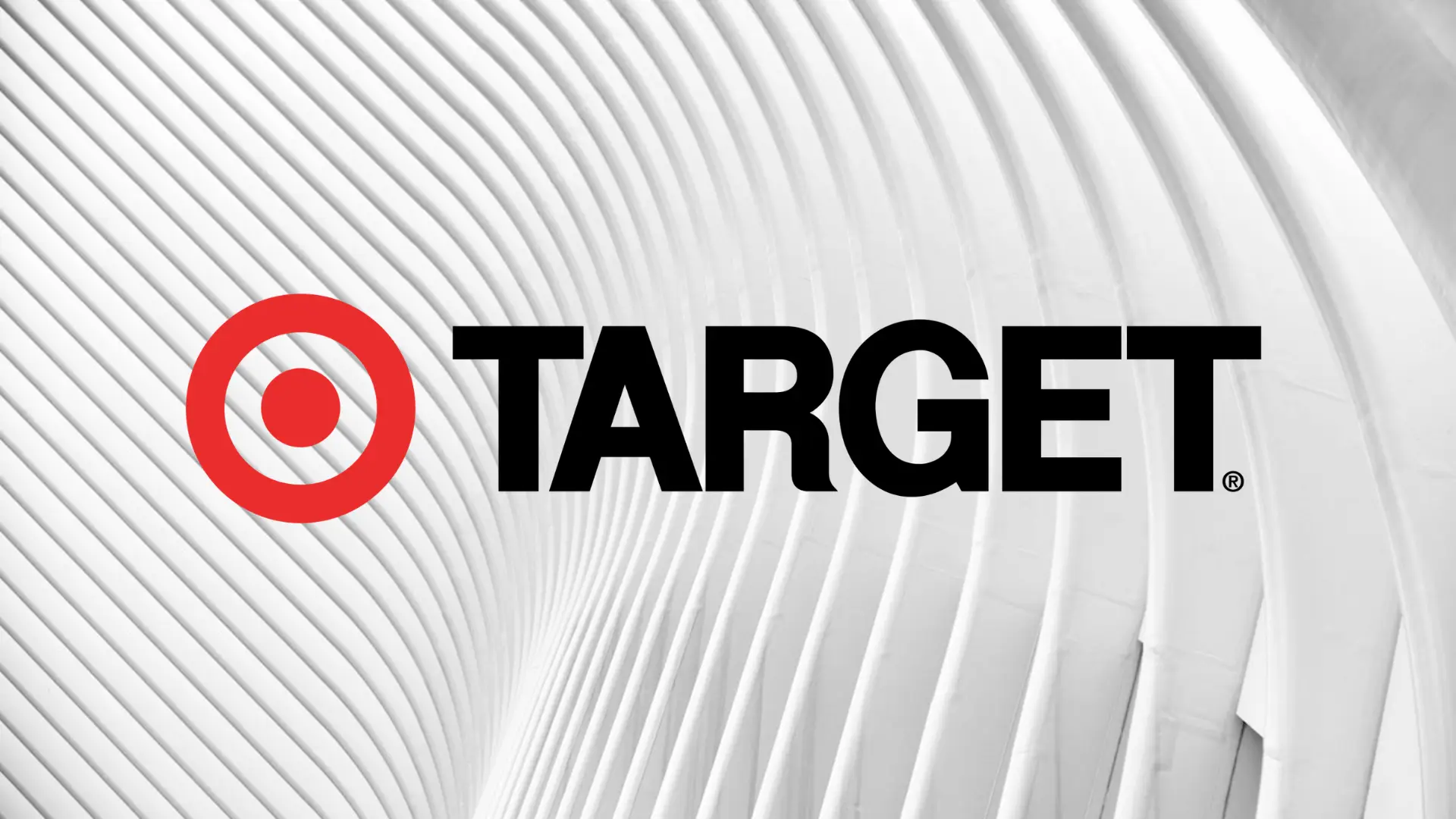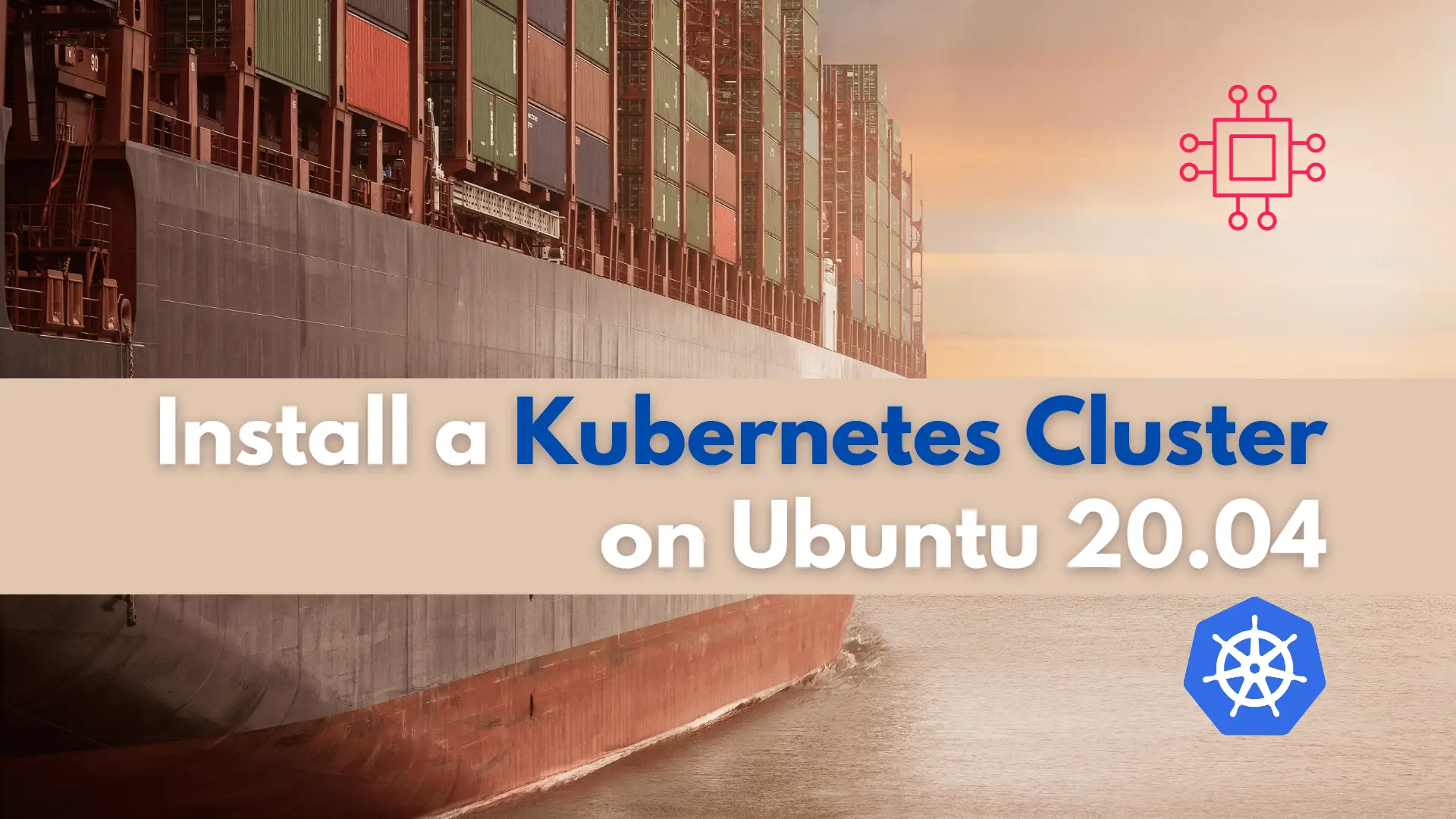
Are you interested in a career in Linux or an aspiring Linux professional? Discover how you can earn over $250k in just 5 years. With

We’ll examine how DevOps is reducing time-to-market, while transforming software development, fostering collaboration, and enhancing efficiency.
DevOps has become a buzzword in the IT industry as it is an essential approach that combines development and operations teams to improve the software delivery process. DevOps has significantly impacted the software industry by reducing the time-to-market and enhancing product quality. It has transformed the traditional software development process and has become a critical factor in business success. In this article, we will discuss ten ways DevOps is reducing time-to-market and how it is changing the way IT professionals work.
One of the most significant advantages of DevOps is the implementation of continuous integration and continuous deployment (CI/CD). This approach helps reduce the development cycle time by automating the build, test, and deployment process. With CI/CD, the development team can quickly detect errors and make changes that improve the quality of the product.

Airbnb uses Continuous Integration and Continuous Deployment (CI/CD) to streamline its software development and deployment processes, reducing the time taken to deploy code from weeks to just a few hours. Here’s how Airbnb uses CI/CD:
Continuous Integration: Airbnb’s developers regularly commit their code to the company’s main code repository. Whenever a code change is committed, it triggers an automated build process that compiles the code, runs unit tests, and creates a build artifact.
Automated Testing: Airbnb has an extensive suite of automated tests that run every time a code change is committed. These tests include unit tests, integration tests, and end-to-end tests that ensure the code is functional and free of bugs.
Continuous Deployment: After the automated tests have been run and passed, the new code is automatically deployed to a staging environment where it undergoes further testing. If the code passes all the tests in the staging environment, it is automatically deployed to production.
Blue/Green Deployment: Airbnb uses a blue/green deployment strategy, where two identical production environments (blue and green) are set up. When a new code release is ready for deployment, it is deployed to the inactive environment (e.g., green) and tested thoroughly. Once the new code is verified, traffic is switched from the active environment (e.g., blue) to the new one (e.g., green).
By automating the build, testing, and deployment processes, Airbnb has significantly reduced the time it takes to release new features and fixes. This has helped the company stay agile and respond quickly to changing customer needs and market conditions.
DevOps emphasizes the use of Agile methodology, which promotes iterative and incremental development. It breaks down the development process into smaller, manageable chunks, making it easier to track progress and identify issues early on. By following Agile principles, teams can ensure that they are building products that meet customer requirements while reducing time-to-market.

Both Google and Microsoft have been using agile methodology to break down complex projects into smaller, more manageable tasks for many years now. Here are some ways in which they use agile methodology:
Sprint Planning: Both companies use sprint planning to break down complex projects into smaller tasks. During sprint planning, the team discusses and decides on the tasks that need to be completed in the upcoming sprint, which is usually a two-week period.
Daily Stand-ups: Daily stand-up meetings are held to keep the team members on track and to identify any obstacles or issues that need to be addressed. These meetings allow the team members to share their progress, what they plan to work on next, and what roadblocks they are facing.
Iterative Development: Both companies use an iterative development approach, where they work on small features or pieces of the project at a time. This allows them to deliver working software or products more quickly and also allows them to get feedback from stakeholders early in the development process.
Continuous Integration and Delivery: Both Google and Microsoft use continuous integration and delivery (CI/CD) to ensure that their software is always in a working state. CI/CD involves automating the process of building, testing, and deploying software, which helps to catch bugs and issues early in the development process.
Overall, Agile methodology helps Google and Microsoft to break down complex projects into smaller, more manageable tasks, which allows them to deliver working software or products more quickly and efficiently. This approach also allows them to get feedback from stakeholders early in the development process, which helps to ensure that the end product meets the needs of the users.
DevOps emphasizes automated testing, which is essential for ensuring that the product meets the required quality standards. Automated testing helps identify issues early in the development process, reducing the time and effort required for manual testing. By automating testing, DevOps teams can release software faster, with fewer bugs and errors.

Etsy uses automated testing as a crucial part of their software development process to detect and fix bugs before they become critical. Here are some ways in which they use automated testing to achieve a 90% reduction in production incidents:
Test-Driven Development (TDD): Etsy uses TDD as a core part of their development process. With TDD, tests are written before the code is developed, ensuring that each new feature or change to the code is tested thoroughly. This helps to catch bugs early in the development process, preventing them from becoming critical issues later on.
Continuous Integration (CI): Etsy uses CI to automate the process of building, testing, and deploying their software. Whenever a developer makes changes to the code, the system automatically builds and tests the code. This helps to catch issues and bugs early, before they can cause problems in production.
A/B Testing: Etsy uses A/B testing to test new features or changes to the code in a controlled environment before rolling them out to all users. This helps to catch any issues or bugs before they can impact the entire user base.
Monitoring and Alerting: Etsy has an extensive monitoring and alerting system in place to detect issues in production. They use tools like Splunk and New Relic to monitor their systems and alert the team when issues arise. This allows them to quickly address any issues before they become critical.
Overall, Etsy’s use of automated testing as a core part of their software development process has helped them to detect and fix bugs before they become critical, resulting in a 90% reduction in production incidents. By catching issues early in the development process and monitoring their systems in production, they are able to provide a more stable and reliable experience for their users.
DevOps promotes collaboration between development and operations teams, reducing silos and improving communication. Collaboration between teams helps identify issues early in the development process and ensure that they are resolved before the product is released. With improved collaboration, DevOps teams can release software faster, with fewer errors.

Companies like Amazon and Netflix have been adopting DevOps as a way to promote collaboration between development and operations teams, leading to a 50% reduction in time-to-market. Here are some instances:
Automation: Both Amazon and Netflix use automation to streamline the software delivery process. They automate tasks like building, testing, and deploying software, which helps to reduce the time required for manual tasks and makes the process more reliable.
Continuous Integration and Continuous Delivery (CI/CD): Both companies use CI/CD to accelerate the software delivery process. They use automation to build, test, and deploy software continuously, which allows them to quickly identify and fix issues.
Agile Development: Amazon and Netflix also use agile development methodologies to promote collaboration between teams. Agile methodologies involve breaking down complex projects into smaller, more manageable tasks, which allows teams to work more collaboratively and effectively.
Cross-Functional Teams: Both companies also create cross-functional teams that include developers, operations engineers, and other stakeholders. This helps to promote collaboration between teams and ensures that everyone is working towards the same goals.
Monitoring and Feedback: Amazon and Netflix use monitoring and feedback to continuously improve their software delivery process. They use tools like monitoring systems and user feedback to identify areas that need improvement and make changes to the process accordingly.
Overall, Amazon and Netflix’s adoption of DevOps has helped them to promote collaboration between development and operations teams, leading to a 50% reduction in time-to-market. By using automation, CI/CD, agile development, cross-functional teams, and monitoring and feedback, they are able to deliver high-quality software quickly and efficiently.
Infrastructure as code (IaC) is an essential component of DevOps that enables teams to manage their infrastructure through code. This approach enables teams to automate the infrastructure deployment process, reducing the time and effort required to set up and configure infrastructure. With IaC, teams can easily replicate infrastructure across environments, making it easier to test and deploy software.

Walmart is using Infrastructure as Code (IaC) to automate the provisioning of its infrastructure, resulting in a 90% reduction in deployment time. Here are some of the ways they are doing this:
Using CloudFormation: Walmart is using AWS CloudFormation, which is a service that helps them to model and provision their AWS resources using templates. They use CloudFormation templates to define and automate the deployment of their infrastructure, including virtual machines, storage, and networking.
Automating Configuration: Walmart is using tools like Chef and Puppet to automate the configuration of their infrastructure. They use these tools to define the desired configuration of their systems, and then apply those configurations automatically as part of the provisioning process.
Continuous Integration and Continuous Deployment (CI/CD): Walmart has implemented a CI/CD pipeline that automates the process of building, testing, and deploying their infrastructure. This helps them to catch issues and bugs early in the development process and ensures that changes are deployed quickly and reliably.
Using Version Control: Walmart is using version control systems like Git to manage their infrastructure as code. This helps them to track changes to their infrastructure over time and makes it easier to roll back changes if necessary.
Monitoring and Logging: Walmart is using tools like CloudWatch and Splunk to monitor their infrastructure and collect logs. This helps them to detect issues and troubleshoot problems quickly.
Overall, Walmart’s use of IaC has helped them to automate the provisioning of their infrastructure, resulting in a 90% reduction in deployment time. By using tools like CloudFormation, Chef, and Puppet, and implementing a CI/CD pipeline, they are able to deploy changes quickly and reliably. Additionally, by using version control and monitoring tools, they are able to track changes and troubleshoot problems more efficiently.
DevOps emphasizes the use of continuous monitoring to track performance and identify issues in real-time. Continuous monitoring helps identify potential issues before they become critical, reducing downtime and ensuring that the product is available to customers. With continuous monitoring, DevOps teams can quickly respond to issues, reducing time-to-market.

Target uses continuous monitoring to track performance and identify issues in real-time, resulting in a 50% reduction in critical incidents. Here are some ways in which they are doing this:
Real-time Monitoring: Target uses real-time monitoring tools like Splunk to collect data from their systems and applications. This allows them to track performance metrics and identify issues as they occur.
Automated Alerting: Target has an automated alerting system in place that notifies the appropriate teams when issues are detected. This helps them to respond to issues quickly and resolve them before they become critical.
Performance Dashboards: Target uses performance dashboards to track performance metrics and identify trends over time. This allows them to proactively identify issues before they become critical and make adjustments to their systems as needed.
Machine Learning: Target is also using machine learning to analyze performance data and identify patterns that may indicate issues. This helps them to detect issues that may be difficult to identify using traditional monitoring tools.
Incident Management: Target has a well-defined incident management process in place that helps them to respond to issues quickly and effectively. They use this process to triage issues, assign ownership, and resolve issues in a timely manner.
Overall, Target’s use of continuous monitoring has helped them to track performance and identify issues in real-time, resulting in a 50% reduction in critical incidents. By using real-time monitoring tools, automated alerting, performance dashboards, machine learning, and incident management processes, they are able to respond to issues quickly and resolve them before they become critical. This helps to ensure that their systems and applications are performing optimally and that their customers have a seamless experience.
DevOps promotes the use of a microservices architecture, which breaks down the application into smaller, independent services. This approach makes it easier to develop and deploy new features, reducing the time required to update the product. With microservices, teams can release software faster and improve the customer experience.

Spotify uses a microservices architecture to quickly deploy and update its platform, resulting in a 50% reduction in time-to-market. Here are some ways in which they are doing this:
Decoupled Services: Spotify has broken down their monolithic application into smaller, more manageable services that can be developed and deployed independently. This decoupling of services allows them to make changes to their platform quickly and without impacting the entire system.
Agile Development: Spotify uses an agile development approach to develop and deploy new services. They follow a continuous delivery model, where they deploy changes to production on a regular basis. This allows them to release new features and updates to their platform quickly and efficiently.
Scalability: Each microservice in Spotify’s architecture can scale independently based on demand. This allows them to provide a reliable and scalable platform that can handle the millions of users that rely on their service.
Automation: Spotify uses automation to streamline their development and deployment processes. They have automated testing and deployment processes that help them catch issues early and deploy changes quickly.
Service Discovery: Spotify uses a service discovery tool that allows their services to find and communicate with each other easily. This makes it easier for them to deploy new services and updates to their platform without causing disruption.
Overall, Spotify’s use of a microservices architecture has allowed them to quickly deploy and update their platform, resulting in a 50% reduction in time-to-market. By breaking down their monolithic application into smaller, more manageable services, adopting an agile development approach, enabling scalability, automating processes, and using service discovery tools, they are able to provide a reliable and scalable platform to their millions of users while staying ahead of the competition.
DevOps emphasizes the use of cloud computing, which provides teams with the flexibility and scalability required to meet customer demands. Cloud computing enables teams to quickly provision resources, reducing the time and effort required to set up and configure infrastructure. With cloud computing, DevOps teams can quickly deploy and scale software, reducing time-to-market.

Capital One uses cloud computing to quickly provision resources, resulting in a 70% reduction in time-to-market for new products. Here are some ways in which they are doing this:
Elasticity: Capital One uses the elasticity of the cloud to quickly provision resources on demand. They can quickly scale up or down based on demand, which allows them to meet the needs of their customers in real-time.
Automation: They have automated their deployment process, which allows them to quickly provision resources and deploy new products. They use tools such as Infrastructure as Code (IaC) and Continuous Integration and Continuous Deployment (CI/CD) to automate the entire deployment process.
Standardization: Capital One has created standard templates for their infrastructure and applications, which allows them to quickly provision resources and deploy new products. This ensures consistency across their entire infrastructure and simplifies the deployment process.
Cost Savings: Using cloud computing allows Capital One to save on infrastructure costs. They only pay for the resources they need, which allows them to reduce their overall infrastructure costs.
Collaboration: The cloud also allows for collaboration between teams. Capital One can easily share resources and collaborate on projects across multiple teams, which allows them to work more efficiently and effectively.
Overall, Capital One’s use of cloud computing has allowed them to quickly provision resources, resulting in a 70% reduction in time-to-market for new products. By leveraging the elasticity of the cloud, automating their deployment process, standardizing their infrastructure, saving on costs, and promoting collaboration between teams, they are able to innovate and deploy new products more quickly and efficiently than ever before.
DevOps promotes the use of containerization, which enables teams to package and deploy software in a lightweight, portable container. Containerization makes it easier to deploy software across multiple environments, reducing the time and effort required to test and deploy software. With containerization, DevOps teams can release software faster, with fewer errors.

The New York Times (NYT) has been using containerization technology to improve the speed and efficiency of its application deployment process. Containerization is a technique that allows applications to be packaged along with their dependencies and libraries in a portable and isolated environment.
The NYT’s adoption of containerization has resulted in a 50% reduction in time-to-market, meaning they can deploy new features and updates to their applications faster than before. This has allowed them to be more agile and respond quickly to changing market demands.
Here are some of the ways that the NYT uses containerization:
Docker: The NYT uses Docker to package its applications and their dependencies into containers. Docker allows the NYT to create lightweight, portable containers that can be easily moved between development, testing, and production environments.
Kubernetes: The NYT uses Kubernetes, an open-source container orchestration tool, to manage its containers. Kubernetes allows the NYT to automate the deployment, scaling, and management of its containerized applications.
Microservices architecture: The NYT has adopted a microservices architecture, where applications are broken down into smaller, independent services that can be developed and deployed separately. Containerization makes it easier to manage these services and deploy them to production.
Continuous integration and deployment: The NYT uses continuous integration and deployment (CI/CD) pipelines to automate its software development process. Containerization makes it easier to test and deploy changes to these pipelines quickly and efficiently.
Overall, containerization has enabled the NYT to be more efficient in its application development and deployment process, resulting in faster time-to-market and a more responsive organization.
Finally, DevOps emphasizes the use of tools that automate and streamline the software development process. DevOps tools help teams manage the development process, automate testing, and streamline deployment. With the right DevOps tools, teams can reduce the time and effort required for manual tasks, improving efficiency and reducing time-to-market.

IBM has implemented various DevOps tools and practices to automate its development process and accelerate its release cycle. Here are some ways IBM uses DevOps tools to achieve a 50% reduction in release time:
Continuous Integration and Continuous Delivery (CI/CD): IBM uses CI/CD pipelines to automate the build, testing, and deployment process. This helps to catch issues early and ensure that the code is always in a releasable state.
Automation Testing: IBM uses automation testing to test software code throughout the development cycle. Automated testing helps to identify defects early in the development process and ensure that the software works as expected.
Infrastructure as Code (IAC): IBM uses IAC to define and manage its infrastructure, including servers, networks, and storage, as code. This ensures that the infrastructure is consistent and can be easily replicated, reducing the time required to set up and configure environments.
Collaboration and Communication: IBM uses collaboration tools, such as Slack and Jira, to enable cross-functional teams to work together more efficiently. This helps to ensure that everyone is working towards the same goals and objectives.
Agile Methodologies: IBM uses Agile methodologies, such as Scrum, to manage its development process. This helps to prioritize work, track progress, and adapt to changing requirements.
By implementing these DevOps practices and tools, IBM has been able to automate its development process, resulting in a 50% reduction in release time. This has helped IBM to deliver software faster, improve customer satisfaction, and stay ahead of the competition.
DevOps has become a critical factor in business success by reducing time-to-market and enhancing product quality. DevOps has transformed the traditional software development process by promoting collaboration, automation, and continuous improvement. By implementing continuous integration and deployment, Agile methodology, automated testing, infrastructure as code, continuous monitoring, microservices architecture, cloud computing, containerization, and DevOps tools, IT professionals can significantly reduce the time-to-market while delivering high-quality software to customers.
Was this article helpful to you? If so, leave us comment below and share!
Related Posts

Are you interested in a career in Linux or an aspiring Linux professional? Discover how you can earn over $250k in just 5 years. With

In today’s article, we will review the step-by-step process involved with a Kubernetes cluster install on Ubuntu server version 20.04. However, this procedure will work

Discover how Linux in Cloud Computing and DevOps is revolutionizing the way businesses manage their IT infrastructure, offering unparalleled scalability, customization, and security. Table of
